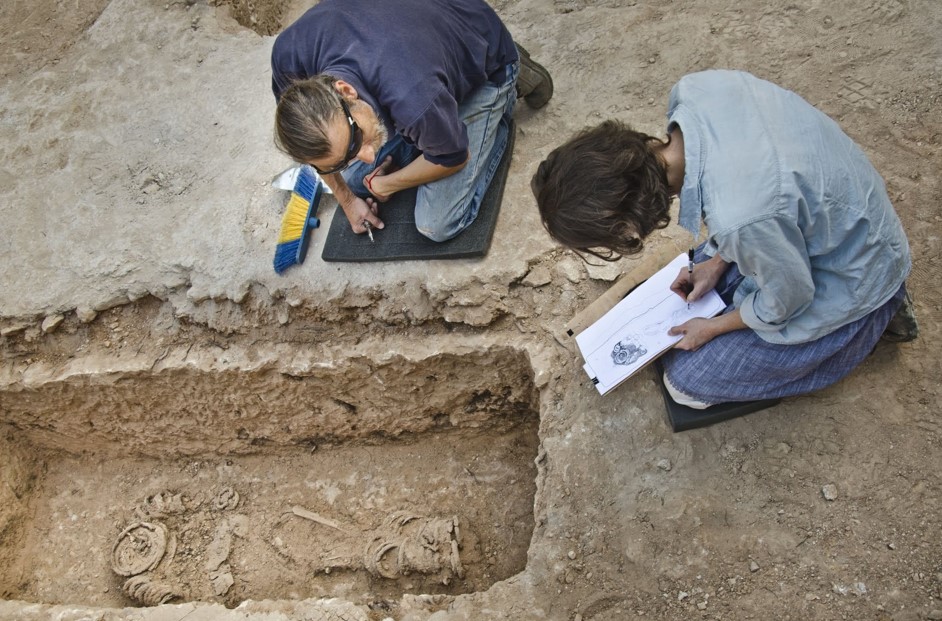A skeleton that was found shackled with thick mental chains and weighed down with iron plates has turned out to be female, thus revealing that women as well as men once practiced extreme asceticism. Found in Jerusalem and dated to the fifth century CE, the ancient nun is thought to have tormented herself in the hopes of purifying her soul and attaining spiritual perfection.
ADVERTISEMENT
The popularity of severe asceticism – meaning abstinence from all physical pleasure and comfort – spread through Europe and the Middle East after Christianity became the official religion of the Roman Empire in 380 CE. Numerous wealthy women are believed to have adopted the practice as a way of counteracting their lavish lifestyles, although until now, archaeological evidence had suggested that chaining and other extreme acts of self-punishment were performed only by men.
“The monks forced destructive acts and self-harm onto the body,” said excavation leaders Zubair ʼAdawi and Kfir Arbiv in a statement via email. “Among the described forms of affliction were prolonged fasts; wrapping iron chains and various accessories around the body; tying the body to rocks; loading on heavy weights; tying the body and placing it in a device which forced it to stand and to deny sleep; self-imprisonment and contraction into a narrow and isolated living space – inside abandoned towers, caves or cells; in hanging cages; on the tops of pillars (a ‘stylite’) or even living in the treetops.”
“In some cases, the monks threw themselves into a fire or in front of animals of prey,” they add.
In their new study, the researchers describe their efforts to determine the sex of a skeleton that was found in a crypt within a fifth-century Byzantine monastery. Because of the body’s poor state of preservation, it was not possible to derive the sex from the bones themselves, so the team utilized an innovative technique that enables the identification of biological gender from proteins present in the tooth enamel.
Unexpectedly, results indicated that the skeleton was female, belonging to a nun rather than a monk. “This is the first evidence showing that the Byzantine self-torment ritual, was performed by women and not exclusively by men,” write the study authors.

The researchers had expected to confirm the skeleton’s sex as male.
Image credit: Yoli Schwartz, Israel Antiquities Authority
“The woman was discovered in a single grave, dedicated to her as a sign of honor under the church altar,” explained ʼAdawi, Arbiv, and co-author Dr Yossi Nagar. “She was bound with 12-14 rings around the arms or hands, four rings around the neck, and at least 10 rings around the legs. Iron plates or discs on her stomach, which were attached to the rings, gave her skeleton an armored form.”
ADVERTISEMENT
Reacting to the study’s findings, Dr Amit Re’em of the Israel Antiquities Authority explained that “in order to take part in the idealistic religious ideals of the life of nuns and ascetics of that time, which were mostly a male domain, of necessity they had to – according to traditions and legends – disguise themselves as men, and live thusly until their death.”
The study has been published in the Journal of Archaeological Science: Reports.
Source Link: Chained-Up Nun’s Skeleton Confirms Byzantine Women Practiced Extreme Self-Torture